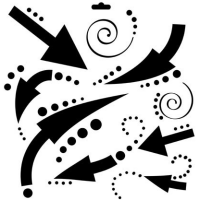Playing Scores on the Piano
 As a conductor you often have to play scores with more than two staffs. This might be an a cappella piece, in which the parts are notated on a seperate staffs. It might be a work for choir plus accompaniment. Such a piece of sheet music is not easy to play. At first you may be disencouraged by all the notes. What might be a good way to learn such a score?
As a conductor you often have to play scores with more than two staffs. This might be an a cappella piece, in which the parts are notated on a seperate staffs. It might be a work for choir plus accompaniment. Such a piece of sheet music is not easy to play. At first you may be disencouraged by all the notes. What might be a good way to learn such a score?
If you are playing complicated scores, at first you might try to play all notes. However, this will cause you to play very slow, and after a while you will lose overview and you will probably get tired. Let go of your urge to play all notes!

 In a previous post we talked about solfège. Solfège is translating notes on paper to sound without help of an instrument. Going in the opposite direction is interesting as well: analysing melodies and harmonies, in other words, notating music by ear.
In a previous post we talked about solfège. Solfège is translating notes on paper to sound without help of an instrument. Going in the opposite direction is interesting as well: analysing melodies and harmonies, in other words, notating music by ear. A good director is capable of deriving keys from the tuning fork. But doing so isn’t always easy. From the a of the tuning fork you would like to jump to the new root at once. However, not every interval is that easy to find. An ascending second or fourth is doable. But a sixth or a tritone, can be really hard to find.
A good director is capable of deriving keys from the tuning fork. But doing so isn’t always easy. From the a of the tuning fork you would like to jump to the new root at once. However, not every interval is that easy to find. An ascending second or fourth is doable. But a sixth or a tritone, can be really hard to find.